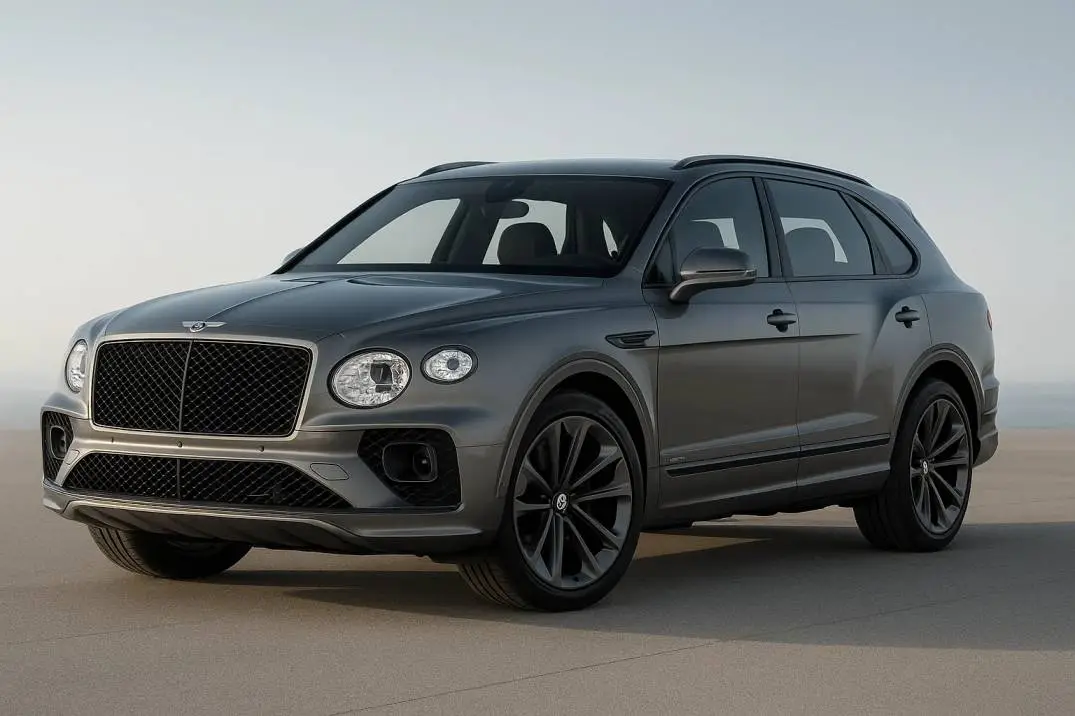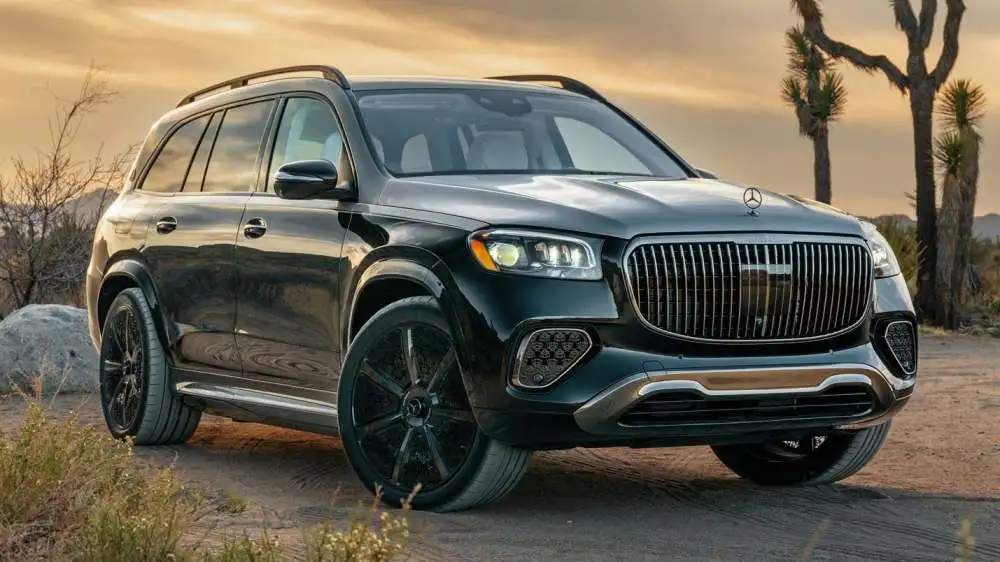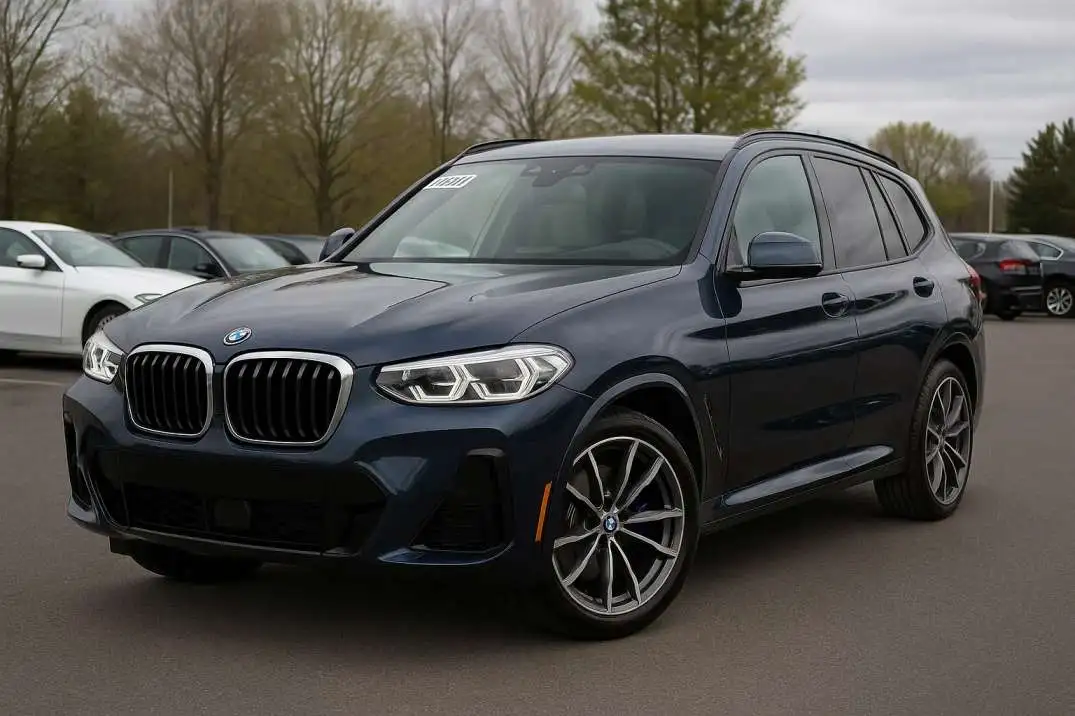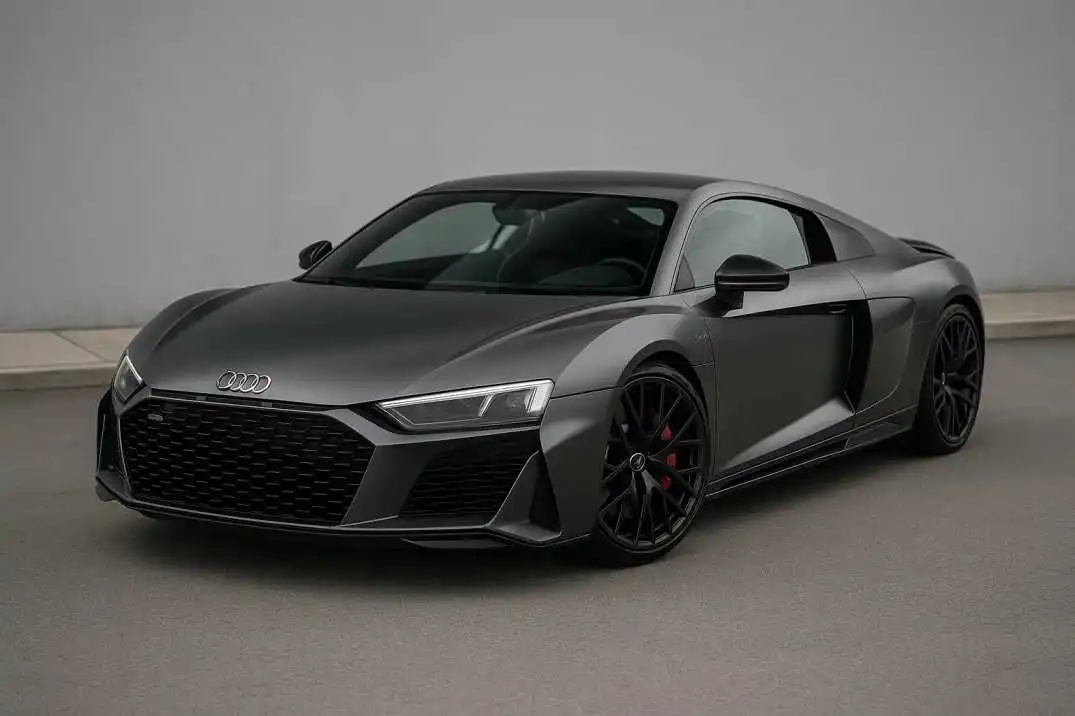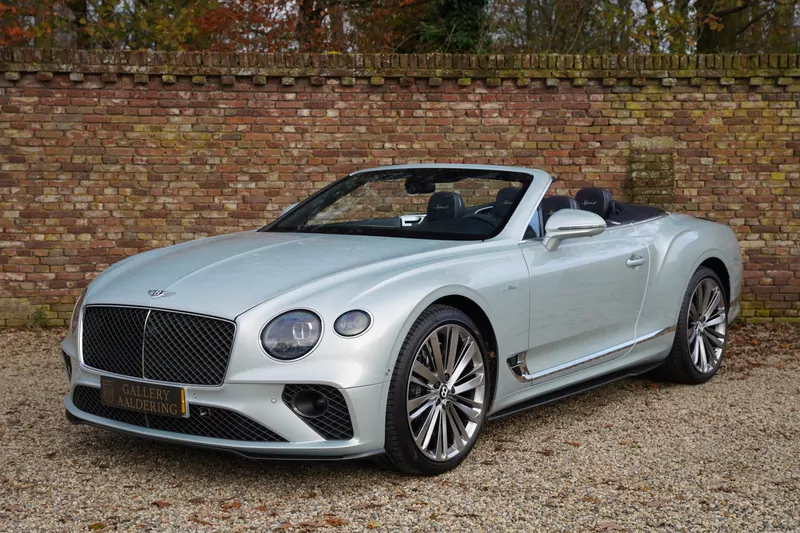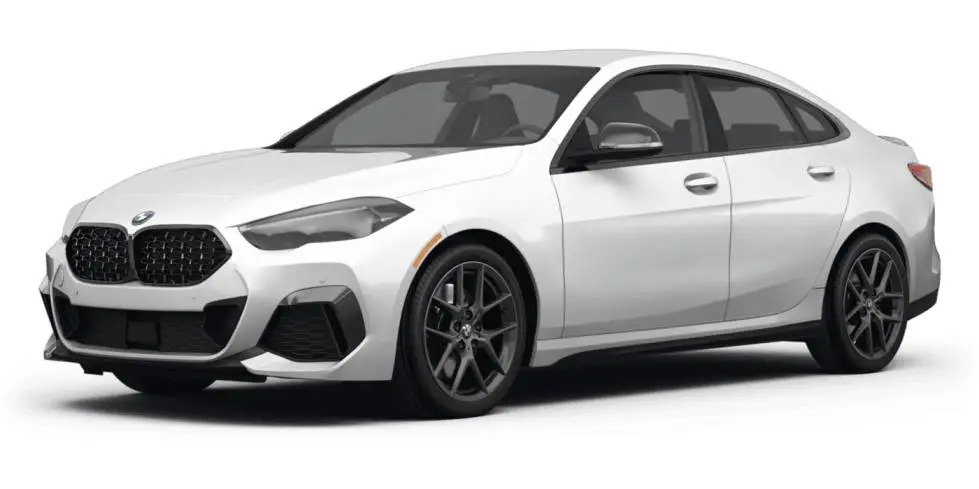Toyota Supra vs BMW Z4 – How Are They Different?
When it comes to historic car manufacturer partnerships, Mercedes and McLaren, Toyota and Subaru, and Shelby and Ford are likely to come to mind first. Some of those partnerships have given the world some of the most prestigious and sought-after models in history. The McLaren Mercedes SLR, Shelby GT500, and Subaru BRZ/Toyota 86 are all examples of manufacturers bringing their individual strengths to a worldwide table in order to create something truly magical.
With all of those examples, the partnerships make a lot of sense, Shelby and Ford have had a tight relationship since the early 1960s, Subaru and Toyota are closely linked in terms of location and heritage, and McLaren and Mercedes both have an wide-stretching history in Formula 1 and racing in general. A few years ago, a increasingly unlikely partnership began between two manufacturers that differ in increasingly ways than they are similar. That partnership is the one between BMW and Toyota.
While the BMW/Toyota partnership began far surpassing 2018, the ultimate result of their collaboration was the introduction of new versions of previous fan-favorite models from both manufacturers. For BMW, the G29 Z4 represents the second generation of the Z4 roadster which replaced the Z3 roadster and coupe from the early 2000s. Toyota’s new model, at the time, carried far increasingly weight and came from a increasingly hard-hitting and legendary lineage than BMW’s contribution. The MKV or A90 Supra had big shoes to fill, and its current reputation is still contested 4 years later.
In this article, we’ll take a squint at the Toyota Supra vs BMW Z4 side by side. As a joint venture between the two companies, both cars have a pearly bit in worldwide while still maintaining individual identities.

BMW/Toyota Partnership
I’m sure that scrutinizingly no one expected the MKV Supra to have a BMW powerplant under the hood. That begs the question, how did the BMW/Toyota partnership plane uncork in the first place? The relationship unquestionably began quite a while surpassing either the G29 BMW Z4 or A90 Supra were announced. The collaboration unquestionably began in 2012 with the intention of creating a next-generation lithium-ion-based shower lamina to be used in both companies’ future EV offerings.
Beyond their efforts to develop a new form of lithium-air shower cell, Toyota and BMW moreover wished to interreact on developing new hydrogen technology as well. In 2012, they planned to have a new hydrogen fuel lamina stack, hydrogen tank, hydrogen battery, and hydrogen motor completed by 2020. The ultimate goal was to have a functional prototype vehicle ready, operating with zero emissions on hydrogen fuel.
BMW did sooner end up with a functional prototype of the BMW iX5 hydrogen SAV which is now in production. Toyota is rumored to be working on a similar vehicle which will likely be spoken in the near future.
While volitional fuel solutions are interesting and important, that isn’t what had people excited well-nigh their collaboration. At the time, BMW and Toyota moreover spoken that they would be working on a joint platform for a midsize sports car. That is the news that everyone wanted to hear.
According to Toyota, the ultimate goal of the sportscar project was “to combine each other’s (BMW and Toyota) technology and knowledge at a upper level to maximize consumer satisfaction.” Now that we have seen the end result in both the A90 Supra and the BMW Z4, it is well-spoken that they workaday that goal.
Engine Options
One of the most scandalous nature of the MKV Supra is its use of BMW powerplants. Looking when to the MKIV Supra, the notorious Toyota 2JZ-GTE engine was one of the model’s primary selling points. Not only was the 2JZ-GTE extremely modifiable, reliable, and powerful, but it moreover gave Toyota a new identity, proving that they could phalanges it out with Nissan and Mazda in the 1990s Japanese sports car race. Many diehard Supra fans found the A90 Supra’s use of BMW engine options blasphemous. While it is easy to see where they’re coming from, it is moreover important to squint at the positives of that wattle as well.
Straight-6 engines are BMW’s specie and butter. Overly since the BMW 303, the German marque has been known for developing the platonic tabulation for the straight-6 formula. When the BMW/Toyota partnership began in 2012 and the sports car project was underway, Toyota realized that they didn’t have any workable straight-6 engines in their itemize that would work in the new chassis. BMW certainly did, though.
The forfeit of developing a new engine from the ground up is an scrutinizingly incomprehensibly big expense. For that reason, Toyota decided to employ the BMW B58 straight-6 engine that BMW had once been using for a few years surpassing the Z4 and Supra were released.
While the Supra-purists’ treatise still stands, there truly isn’t a largest straight-6 engine supplier to team up with than BMW. In 2021, the MKV Supra moreover received the BMW B48 straight-4 engine, which is plane increasingly of a throw-away from the old Supra. Regardless, both engines have proven to be extremely reliable and modifiable, two of the main traits of the 2JZ-GTE.
Toyota Supra 3.0 vs BMW Z4 M40i - BMW B58 Engine
While the MKV Supra came out a year without the G29 Z4M40i, the BMW B58 engine was the first motor offered in both. In both the Toyota Supra vs BMW Z4, the BMW B58 is the top engine model available. The 3.0L BMW straight-6 has been virtually since 2015 when it replaced the minion BMW N55 engine.
Compared to the BMW N55, the B58 has a sealed deck woodcut design, higher uplift pressure, higher pinch ratio, and a slight increase in displacement. It is not only one of the strongest straight-6 engines that BMW has overly made, but moreover one of the most powerful.
The BMW B58 has been offered in seven variegated variants, not including the high-performance S58 engine. Power from the BMW B58 ranges between 320 and 382 horsepower, with both the Supra 3.0 and Z4 M40i falling tropical to the higher end of that range.
As of 2021, both the MK5 Supra 3.0 vs BMW Z4 M40i are equipped with the B58B30O1, which is moreover the variant used in the G20 BMW M340i, G01 BMW X3 M40i, G22 BMW M440i, and G42 BMW M240i. In B58B30O1 trim, the BMW B58 produces 382 horsepower and 369 lb-ft of torque.
Before the B58B30O1 was introduced to the 2021 Supra 3.0, the 3.0 Supra employed flipside version of the B58 known as the B58B30C, which was only used in the Supra and not shared with any BMW models. The pre-2021 version of the Toyota Supra 3.0 was significantly lanugo on power in comparison to the variant, producing 335 horsepower and 369 lb-ft of torque due to the fact that it was detuned by Toyota.
If you are interested in learning increasingly well-nigh the BMW B58 engine, trammels out our BMW B58 FAQ guide.
Toyota Supra vs BMW Z4 - BMW B48 Engine
For the 2021 model year, the 2.0L BMW B48-powered Toyota Supra was offered in the United States for the first time. Despite stuff the wiring model MKV Supra, the 2.0L Supra isn’t a slouch by any means. It can still alimony up with many other sports car rivals, producing 255 horsepower and 295 lb-ft of torque.
While the B58 is certainly the increasingly powerful and engaging, the BMW B48 4-cylinder engine is a fan favorite in the BMW polity for good reason. The B48 engine is a very versitile one that has been used in a wide range of BMW vehicles, from 3-Series models to their larger crossover SAV X3 models.
Since B48 production began in 2014, the 2.0L BMW 4-Cylinder has been offered in 12 variegated variants, all putting out variegated power figures. The 255 horsepower B48B20O1 engine variant that the 2.0 Supra uses is shared with the BMW G20 3-Series, BMW G29 Z4, BMW G22 430i, and a few others. All of the BMWs that have used the B48 engine have been praised for their quick-spooling nature, due to the single BMW twin-scroll turbo, and reliability.
Much like the 2JZ from the MKIV Supra, the BMW B48 is known for its reliability. One of the reasons that the B48 is so reliable is its use of forged internals. The BMW B48’s connecting rods and zombie are made from forged steel, making them exceedingly strong and worldly-wise to withstand a pearly bit increasingly power than the engine can produce from the factory. The fact that the B48 engine features forged internals and is an extremely easy engine to tune ways that it is possible to get far increasingly performance out of your 2.0L Supra than the factory-rated 255 horsepower.
Toyota Supra vs BMW Z4 - Chassis

As we have once covered, the Z4/Supra chassis was a collaborative effort between BMW and Toyota, with neither visitor taking well-constructed credit for its design. As a result, the underpinnings of both the Toyota Supra vs BMW Z4 are nearly identical. So, let's talk a bit well-nigh the chassis and what both cars share.
Perhaps most importantly, from a chassis dynamics perspective, both the Toyota Supra vs BMW Z4 share a short 97.2-inch wheelbase. That is an important attribute, as the wheelbase plays a massive role in how a vehicle handles. As a unstipulated principle, cars with a shorter wheelbase tend to have a lower moment of inertia, which helps the car rotate faster. In simpler terms, cars with shorter wheelbases often handle better, have largest turning radii, and are increasingly wiry at the forfeit of high-speed stability.
The build materials for both the BMW Z4 and Toyota Supra are moreover very similar when it comes to the chassis. It is well-spoken that Toyota and BMW both used BMW’s cluster tracery platform as there is a strong accent on material weight savings while still maintaining lattermost rigidity. Most of the Z4 and Supra’s chassis are comprised of aluminum, including the subframe and tenancy arms. Both BMW and Toyota wished to create the weightier handling car possible, hence the need for chassis rigidity.
BMW has wilt famous for their unparalleled weight distribution, with most BMWs sharing a perfect 50/50 weight distribution. That can be said for the G29 Z4 as well. The 3.0 Toyota Supra moreover has a 50/50 weight distribution, making chassis dynamics increasingly predictable. The Supra 2.0L has a 49/51 weight distribution due to the decreased weight of the B48 engine.
Toyota Supra vs BMW Z4 - Suspension
While there are many similarities between the BMW Z4 vs Toyota Supra, the two manufacturers still wanted the two vehicles to have their own identity in line with what each trademark represents. As a result, BMW and Toyota decided to limit contact between each other when it came to identity-defining elements of each car, with the engine tune, exterior design, and suspension all falling under that umbrella.
Since suspension is such a crucial element of how a vehicle behaves, BMW and Toyota opted to tune the suspension differently. That said, most of the hardware is extremely similar between the Toyota Supra vs BMW Z4.
Front Suspension
The Toyota Supra vs BMW Z4 not only share many suspension and steering-related parts with each other, but moreover with other BMW models. The steering post in both the Toyota Supra vs BMW Z4 was pulled directly from the G01 X3 and has a steering rack that has the same 15:1 steering ratio as the BMW M2.
Other identical front suspension components include tie rod ends, suspension bushings, and subframe. One of the biggest suspension differences between the two is tenancy arm length. Compared to the Z4, the Supra uses longer tenancy arms, permitting Toyota to retread slant differently than BMW. The willowy front dampers on the Supra 3.0 are moreover tuned differently to vary the driving finger a bit more.
Rear Suspension
Moving on to the rear, it’s no surprise that the two vehicles share just as many rear suspension components as they do up front. These components include the upper tenancy arms, trailing arms, track arms, and willowy dampers. Once again, the rear willowy dampers on the Toyota Supra vs BMW Z4 are tuned differently and there are likely multiple variegated spring rates misogynist for both the Supra and Z4 based on trim.
Wheel sizing is slightly variegated wideness the Supra model range, with the 2.0 Supra coming standard with forged aluminum 18” wheels and the 3.0 Supra using 19” forged wheels. Despite using two variegated wheel sizes, the Supra and Z4 both come equipped with 255/35R19 front and 275/35R19 Michelin Pilot Super Sport tires.
Ultimately, the suspension setups on the Toyota Supra vs BMW Z4 are scrutinizingly entirely identical despite claims that the two companies worked on their suspension arrangements independently. Not only is the Z4/Supra suspension the same, but it is moreover shared with other models in the BMW lineup, with most of the components moreover stuff interchangeable with the BMW G20 3-Series.
Toyota Supra vs BMW Z4 - Driving Characteristics
While up to this point it is pretty evident that the MKV Supra and BMW Z4 are much increasingly similar than the two companies would like you to believe. From the engines to the chassis and suspension, its nonflexible to imagine that the two would act very differently on the road. With that stuff said, there are some important distinctions that make the two finger different, but not so variegated that you’d know that you were stepping out of a BMW and into a Toyota.
Toyota Supra vs BMW Z4 - 0-60
Looking at 0-60 times of the 2.0 Supra vs BMW Z4 sDrive30i, it is well-spoken that the BMW’s spare weight plays a role in acceleration. The 2.0 Supra has a 0-60 time of 5 seconds compared to the Z4 sDrive30i’s 5.2 seconds. While only a marginal difference, the 259 weight difference can be seen between the beefed-up Toyota Supra 3.0 GR’s 0-60 time compared to the Z4M40i’s 0-60 time. The Supra 3.0 can get to 60 in 3.9 seconds compared to the 4.4 seconds that it takes the Z4M40i to reach 60 mph.
Handling
Beyond straight-line performance, it is widely terminated by multiple variegated sources that the Toyota Supra is the increasingly fun car to drive. Most automotive reviewers that have driven both cars say that the Supra has a much increasingly lively rear end, despite both the Z4M40i and Supra 3.0 GR sharing an E-differential. The slightly increasingly unpredictable nature of the Supra has caused some to deem it as twitchy, but not necessarily with any negative connotation.
Compared to the Supra, the BMW Z4 has seemingly received increasingly praise for its handling characteristics from a purely practical standpoint. In sport mode, the Z4 is said to be extremely planted and predictable. It has been described as “reserved” by a number of reviewers. While it might get virtually a track faster than the Supra, it comes at the price of a bit of thrill.
Toyota Supra vs BMW Z4 - Interior

Due to the fact that both cars are so similar under their skin, the interior of both is an zone in which BMW and Toyota could introduce a bit increasingly of their trademark identity. Due to the fact that the Supra comes exclusively as a coupe and the Z4 comes exclusively as a convertible, there are some inherent differences present between the two on the inside. Overall, the Supra feels much increasingly cramped on the inside compared to the Z4. That is unmistakably inferential plane remoter when the BMW Z4’s roof is lowered.
With a nearly $15,000 price difference between the Toyota Supra vs BMW Z4, the interior of both is where quite a bit of that price discrepancy can be found. The BMW’s interior is unquestionably increasingly premium feeling, well-constructed with Vernasca leather and brushed aluminum finishes.
While the BMW Z4 comes in a variety of variegated interior colors and leather options, the Supra is relegated to a black-on-black leather interior. While that isn’t a bad thing, it is certainly missing a bit of flair that is present with the BMW Z4.
In terms of infotainment and the digital dashes, BMW does it largest as well. That is likely due to the fact that BMW supplied all of the internal electronics to Toyota as well. The Supra utilizes an 8.8” touchscreen main infotainment display, while the BMW makes use of a 10.25” touchscreen infotainment screen.
The Supra does its digital soupcon slightly variegated from the BMW, with a inside tachometer as opposed to the split speedometer/tachometer philharmonic in the Z4. Both cars use BMW’s well-polished iDrive system, however, the Supra still runs the older iDrive 6.0 version while the Z4 gets BMW’s new software.
Toyota Supra vs BMW Z4 Conclusions
What started out as an unlikely partnership ended with two very capable sportscars. Despite their fundamental and cultural differences, BMW and Toyota combined their strengths very well resulting in the BMW Z4 and the Toyota Supra. While BMW and Toyota requirement that their collaboration ceased nearing the final stages so that both cars could have their own identities, the Z4 and Supra are extremely similar cars, both under their skin and in terms of how they drive.
The BMW B48 and B58 engines that power the Z4 sDrive30i, Toyota Supra 2.0, Z4M40i, and Supra 3.0 GR are fitting choices for the job. Despite many Toyota purists wrongness that the Supra’s new powerplant is not Japanese in origin, it is nonflexible to oppose with the B58’s performance, reliability, and efficiency. Both the Z4 and Supra are extremely capable cars, plane in their lowest trim.
While the Z4 and Supra do differ in their suspension and engine tuning, the fact that the hardware is nearly identical make the small tweaks only slightly noticeable. Plane so, the Supra and Z4 do have slightly variegated handling characteristics, with the Supra a bit increasingly on-edge than the Z4. Some people might enjoy the increasingly mature nature of the Z4, while others might finger constrained by the predictability.
Ultimately, if you are trying to decide between the two cars, the visualization boils lanugo to how you’ll be using the car. From the inside, there’s no debate that the BMW is the nicer car. As it should be, with a $15,000 difference in price. The BMW Z4 is likely the largest option for a daily-driven car. Between the Z4’s improved comfort, its on-street manners, and roomier cabin, the Z4 beats out the Supra as a usable weekend car. With that stuff said, you’ll likely have a largest time at the track with the Supra.

